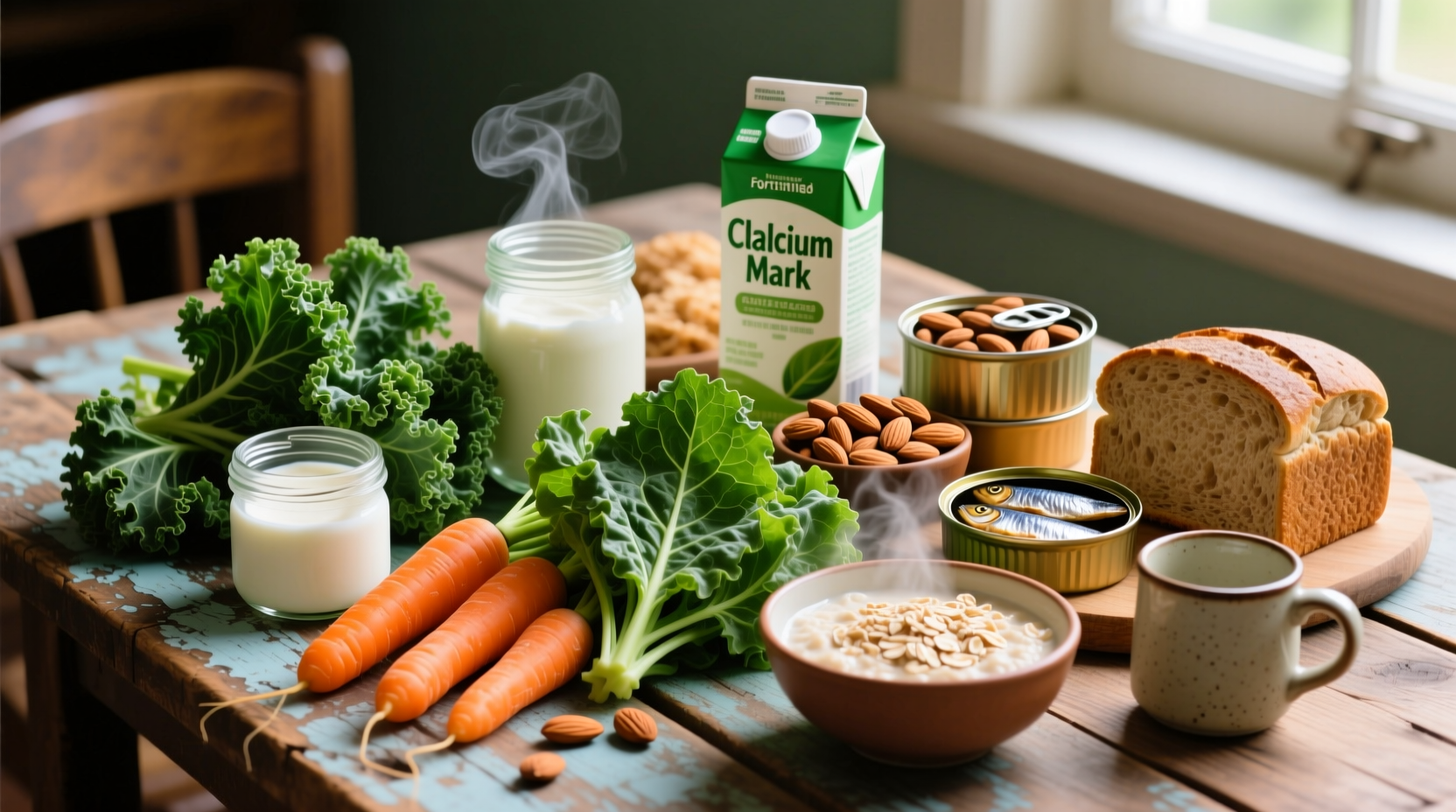Calcium isn't just for strong bones—it's essential for nerve function, muscle contraction, and blood clotting. Yet nearly 44% of Americans don't meet daily calcium requirements, according to the National Institutes of Health. Whether you're lactose intolerant, vegan, or simply optimizing your diet, knowing precisely which foods deliver bioavailable calcium makes all the difference.
Why Calcium Source Matters More Than You Think
Not all calcium-rich foods deliver equal benefits. Bioavailability—the percentage your body actually absorbs—varies dramatically. While dairy provides 30-35% absorption, some plant sources like spinach contain calcium bound to oxalates, reducing absorption to just 5%. Choosing high-bioavailability foods ensures you maximize nutritional payoff from every bite.
| Food Source | Calcium per Serving | Bioavailability | Key Considerations |
|---|---|---|---|
| Plain yogurt (8oz) | 450mg | 30-35% | Probiotics enhance mineral absorption |
| Kale (1 cup cooked) | 180mg | 40-49% | Higher absorption than spinach or chard |
| Sardines with bones (3oz) | 325mg | 25-30% | Also provides vitamin D for better absorption |
| Calcium-set tofu (½ cup) | 250-860mg | 31% | Check label—must be prepared with calcium sulfate |
Dairy Powerhouses: Beyond Basic Milk
While milk provides consistent calcium (300mg per 8oz), fermented dairy often delivers superior benefits. A 2022 study in the American Journal of Clinical Nutrition found that yogurt's live cultures increase calcium absorption by 15% compared to milk. For cheese lovers, parmesan leads with 336mg per ounce, though aged varieties generally contain more concentrated calcium than soft cheeses.
Non-Dairy Calcium Champions You Should Know
Fortified foods bridge nutritional gaps effectively when chosen wisely. Look for plant milks fortified with calcium carbonate or tricalcium phosphate (absorption rate 25-30%), not calcium phosphate which has lower bioavailability. The USDA FoodData Central database confirms that almond milk typically provides 45% more calcium per serving than unfortified soy milk, but check labels as formulations vary widely.

Maximizing Absorption: The Hidden Factors
Your body absorbs calcium best in doses under 500mg at a time. Pairing calcium-rich foods with vitamin D sources (like fatty fish or egg yolks) boosts absorption by 30-40%. Conversely, high-sodium meals increase calcium excretion—every 2,300mg of sodium consumed causes loss of 40mg calcium. The National Osteoporosis Foundation recommends consuming calcium sources away from high-fiber meals since phytates in whole grains can bind calcium.
Smart Incorporation Strategies
Make calcium effortless in your daily routine:
- Add kale or bok choy to morning smoothies (calcium absorption increases in acidic environments)
- Choose canned salmon with bones for sandwiches—just 3oz delivers 180mg calcium
- Use tahini (sesame seed paste) in dressings—2 tablespoons provide 130mg calcium
- Opt for calcium-fortified orange juice with breakfast to complement vitamin C's absorption benefits
Special Considerations by Life Stage
Calcium needs shift throughout life. Adolescents require 1,300mg daily for bone development, while postmenopausal women need 1,200mg due to decreased absorption. Infants get sufficient calcium from breast milk or formula, but toddlers benefit from calcium-rich finger foods like soft cheese cubes and fortified cereal. Older adults should prioritize vitamin D co-consumption since skin synthesis decreases with age.
Debunking Common Calcium Myths
Myth: "All plant milks are equal calcium sources"—Reality: Only fortified varieties provide meaningful calcium, and absorption varies by fortificant type.
Myth: "More calcium prevents fractures"—Research shows excess calcium (>2,000mg daily) may increase cardiovascular risk without reducing fracture incidence.
Myth: "Spinach is a great calcium source"—While high in calcium, its oxalate content makes only 5% bioavailable—kale offers triple the usable calcium per serving.











 浙公网安备
33010002000092号
浙公网安备
33010002000092号 浙B2-20120091-4
浙B2-20120091-4